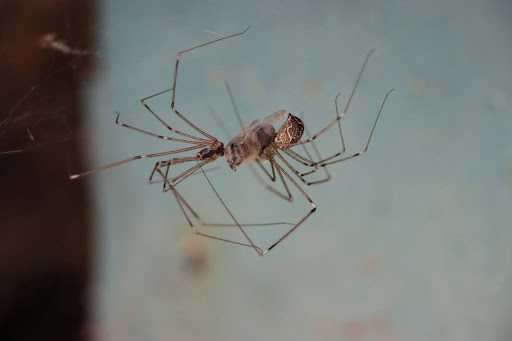Spiders are common household pests, and while they play a crucial role in controlling other insects, their presence can be unsettling for many homeowners.
Did you know that there are approximately 45,000 known species of spiders worldwide? Each has its unique life cycle, but they all follow a similar pattern from egg to adult. Understanding these patterns isn’t just a matter of elementary school biology – but is, instead, the knowledge you can leverage in your seemingly unending war against household pests.
To put it simply, if you want to get rid of a spider, you’ve got to think like a spider! And understanding the life cycle is the first crucial step. We’ll break it down for you in this post.
The Spider Egg Stage
The life of a spider begins in a tiny, delicate egg sac. Female spiders lay hundreds of eggs, an evolutionary adaptation meant to ensure the survival of their species. These egg sacs are often hidden in dark, undisturbed areas, such as under furniture or in the attic. In Vancouver, you might find them in basements or crawl spaces where they are less likely to be disturbed.
The egg sac is a remarkable structure made of silk, providing protection to the developing spiderlings.
The female spider guards these sacs fiercely, ensuring that predators don’t get to them. The eggs typically hatch within a few weeks, depending on the species and environmental conditions.
The Emergence of Spiderlings in the Life Cycle of a Spider
Once the eggs hatch, spiderlings emerge. These tiny, fragile creatures are miniature versions of adult spiders. They disperse quickly, using a method called “ballooning.” This involves releasing a silk thread into the air, allowing the wind to carry them to new locations. This dispersal is essential for reducing competition among siblings and ensuring a higher survival rate.
Here in Vancouver, you might notice an increase in spider activity during the early fall when spiderlings are more active. These young spiders are on the hunt for food and shelter, making their way into homes.
This is one of the best times for you to start thinking about control measures, such as sealing entry points and reducing clutter.
The Molting Process
Spiderlings go through several molts as they grow. Molting is the process of shedding their exoskeleton, allowing them to increase in size.
This stage is crucial for their development, as it enables them to grow and develop their characteristic features. Molting occurs multiple times throughout a spider’s life until they reach adulthood.
During molting, spiders are vulnerable to predators and environmental factors. Common predators here in Washington include birds and other insects.
This is the time when spiders are most vulnerable, again making it a good time to think about implementing various methods of control.
Maturation to Adulthood
After several molts, spiderlings mature into adult spiders.
This stage is marked by the development of reproductive organs and the ability to mate. Adult spiders are usually the ones you encounter in your home, searching for food or potential mates.
Again, you might notice an increase in spider activity during late summer and early fall. This is the mating season for many spider species, and adult spiders are more visible as they search for partners.
Managing Spiders at All Stages
Now that you understand the life cycle of a spider, let’s talk shop – how to get rid of these spiders at any point in their life cycle.
By targeting each stage, you can reduce their population and keep your home spider-free. Here are some tips:
- Eliminate Egg Sacs: Regularly inspect your home for egg sacs, especially in dark, undisturbed areas. Remove and dispose of them to prevent future infestations.
- Seal Entry Points: Check for cracks and gaps in windows, doors, and walls. Seal these entry points to prevent spiderlings from entering your home.
- Reduce Clutter: Spiders love hiding in cluttered areas. Keep your home tidy and organized to reduce potential hiding spots.
- Use Natural Repellents: Essential oils like peppermint and eucalyptus are natural spider repellents. Use them around your home to deter spiders.
- Professional Pest Control: If you have a severe infestation, consider hiring a professional pest control service. In Vancouver, Natura Pest Control offers expert services to help you manage spider populations effectively.
The Takeaway
Remember, spiders play a crucial role in controlling other insect populations, but that probably doesn’t mean you want these creatures roaming freely around your home (no matter how harmless and helpful they might be). By taking a closer look at their needs and behaviors at each stage in the life cycle of a spider, you can create the most targeted plan possible to remove them from your home.
If you’re a homeowner in the Vancouver-Portland Metro area and need expert assistance in spider control, Natura Pest Control is here to help. Our team of professionals is equipped with the knowledge and tools to keep your home spider-free.
Don’t wait until you spot another spider – take action today and enjoy a comfortable, pest-free home.



